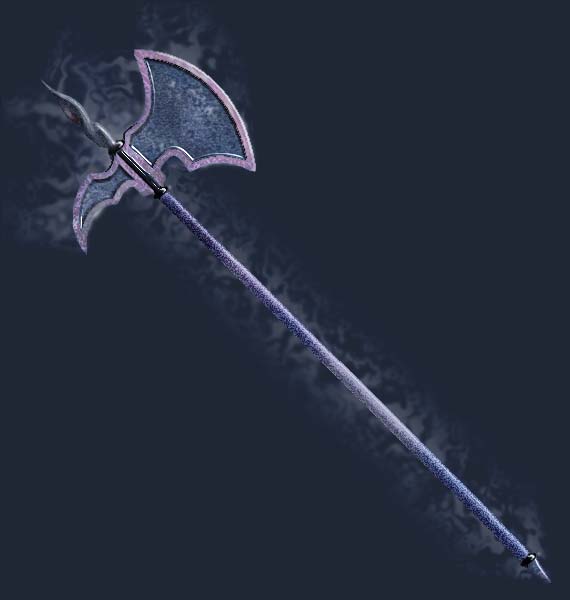Halberd

Halberd

| Weapon Type | Approximate
Weight in Pounds |
Size S or M | Size L | Notes | Length | Space Required | Speed Factor | 0 | 1 | 2 | 3 | 4 | 5 | 6 | 7 | 8 | 9 | 10 |
| Halberd ( |
17.5 | 1-10 | 2-12 | Halberd : includes Lochaber Axe <x?>.
Ko <x: dagger axe>, <Ji> ch'i chi, pi chi, bisento. The great axe is a bardiche or halberd (which are both poleaxes). (79.16) |
5' + | 5' | 9 | 0 | +1 | +1 | +1 | +1 | +2 | +2 | +2 | +1 | +1 | 0 |
This form of a pole axe is
seen as a convex-headed
broad axe in early
examples, but the head is
set at a convenient angle (considering the
point where the blade is
most likely to impact
upon an enemy), so this
alone makes it quite distinct
from an ordinary long-hafted axe. The
whole weapon often reached
8 feet in length. It was also always
topped with a fairly long
spear
point and backed by a spike, which was
often angled or hooked slightly
downward. The spear point is, of
course, designed to keep
opponents at bay and deliver a thrusting attack.
This proved quite useless
when opposing mounted knights
armed with lances
(cf. Battle
of Arbedo, 1422).
The opposing spike was for
penetration of heavy plate armor, with a secondary function as
a hook for dismounting opponents.
The halberd was used extensively,
particularly by the Swiss && Germans,
and considerably modified
and developed over the course of
two centuries. Concave
blades, some very pronounced, were not uncommon,
and some halberd heads were
made smaller (as the piercing-axe)
in order to better penetrate
armor. Many of these weapons
pictured in texts on arms
are not battle arms, but rather fanciful parade
arms. There are examples
of bills and voulges
which are called
halberds, but the discerning
reader will note the differences in form,
especially when keeping
in mind the weapon's possible USE. According
to C.W.C. Oman, the English
brown
bill was a halberd in all respects save the back spike.
<Oman, C.W.C., A
History of the Art of War in the Middle Ages
(two volumes, London 1924)>
<perhaps, quote relevant
paragraph/image, or give a link to such>
|
|
|
|
|
|
*template***template*